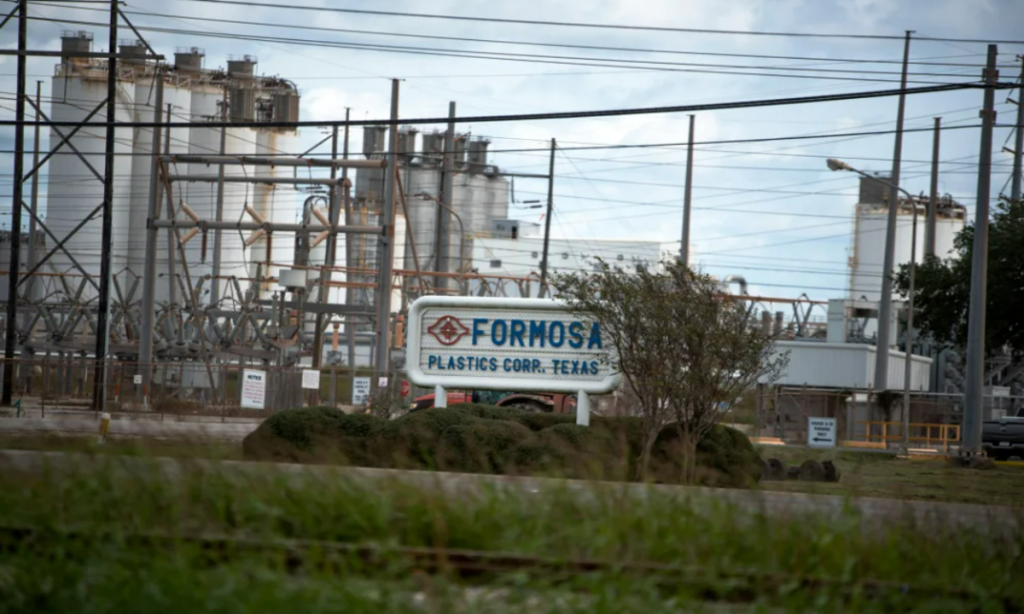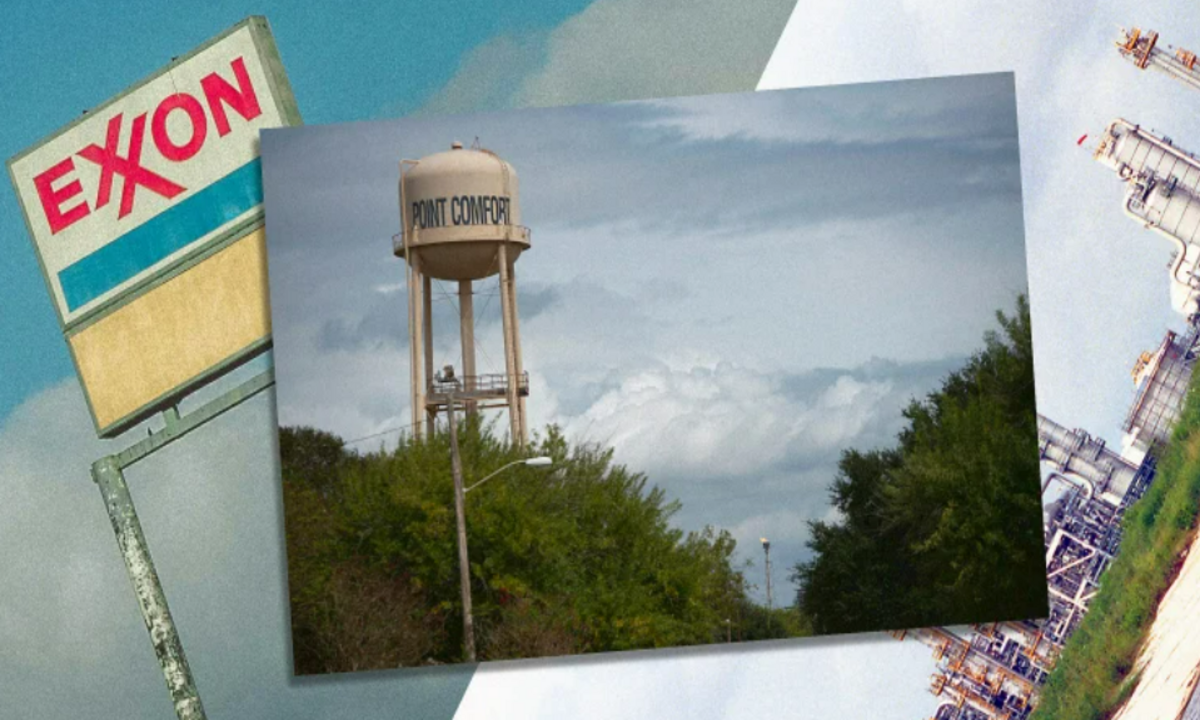POINT COMFORT, TEXAS – Exxon has announced plans to build an $8.6 billion plastics manufacturing plant on the Gulf Coast of Texas, but many local residents are determined to stop it. The proposed factory would be located in Point Comfort, a small community already dealing with pollution from other industrial plants.
Diane Wilson, an environmental activist from nearby Seadrift, Texas, first heard rumors about Exxon’s plans months ago. She knew the company was negotiating with local electricians and planning railroad access. Then, just before Christmas, she received confirmation: Exxon had applied for tax subsidies to build a massive plastics facility in the area.
Wilson has been fighting pollution from another petrochemical plant for years. She won a $50 million settlement in 2019 against the Formosa Plastics Corporation, a company responsible for polluting nearby waterways. The proposed Exxon plant would be built just across from the Formosa facility, and it would discharge waste into the same waterways Wilson has worked hard to clean up.
The Problem with Exxon’s Proposed Plant
Exxon’s proposed plant would use natural gas and oil to make ethylene and propylene – the building blocks of plastic. These materials are used to create plastic products like bottles, packaging, and more. The process of making these chemicals also creates pollution in the form of ammonia, benzene, and methanol, which are harmful to the environment and public health.
Wilson is especially concerned because the new Exxon plant would be located near Cox Creek, an area she has fought for years to protect. “We’ve been cleaning the piss out of Cox Creek, and now they want to put another plant right here,” she said, referring to the nearby Formosa plant that has been a constant source of pollution.
Environmental Justice Concerns
Point Comfort is already home to several factories, including a nitrile factory and a plastics facility, as well as a Superfund site. Many residents are concerned about the health risks posed by these factories, and studies show that industrial plants like the one Exxon plans to build are often located near marginalized communities. According to the U.S. Environmental Protection Agency, more than half of Point Comfort’s residents are people of color, have less than a high school diploma, or speak limited English.
“This is the real sacrifice zone,” Wilson said, referring to the area’s already high levels of pollution. The local community, already exposed to hazardous chemicals, would be further affected by the new Exxon plant.

Exxon’s Tax Breaks and Local Support
To make its new plant a reality, Exxon is applying for tax subsidies from the local school district and other authorities. The company argues that the facility will create 300 jobs in the first five years and boost the state’s economy by $3.6 billion annually once it reaches full capacity in 2032. However, critics like Robin Schneider from Texas Campaign for the Environment argue that Exxon, a highly profitable company, doesn’t need these tax breaks. Exxon made $33.7 billion last year and has promised large returns to its shareholders.
Schneider argues that these tax incentives are unfair to taxpayers, especially when the company could get about $250 million in local tax breaks over 10 years, nearly $1 million per job. Local officials, however, have expressed support for Exxon, seeing the plant as a chance to boost the local economy.
The Fight Against the Plant Continues
Despite Exxon’s financial promises, Wilson and other local residents are determined to stop the plant from being built. She sees this as a fight to protect her community and the environment, and she is prepared to fight every step of the way.
“I didn’t try hard enough to stop Formosa,” Wilson reflected. “This time, I will do everything I can to stop that plant from coming in.”
Exxon has not yet committed to building the plant, but its application for tax subsidies signals that it is seriously considering the Gulf Coast for its project. The company is still evaluating other potential locations, including international options.
The Bigger Picture: Growing Plastic Pollution
Exxon’s proposed plant comes at a time when the global plastic pollution crisis is worsening. The world produces 57 million metric tons of plastic waste every year, contributing to environmental damage worldwide. Experts like Judith Enck, former head of the U.S. Environmental Protection Agency, argue that building new plastics plants is the wrong direction for environmental progress.
“These factories will pollute for decades,” Enck said. “Once these plants are built, it’s hard to shut them down.”
In addition to the environmental concerns, analysts warn that the petrochemical and plastics industries may be in decline. With global pressure to reduce carbon emissions and plastic waste, investing in new plastic production plants may not be financially wise in the long run.
Disclaimer—Our team has checked this article to ensure its accuracy and eliminate any misinformation. We are committed to providing clear and reliable information for our readers.


